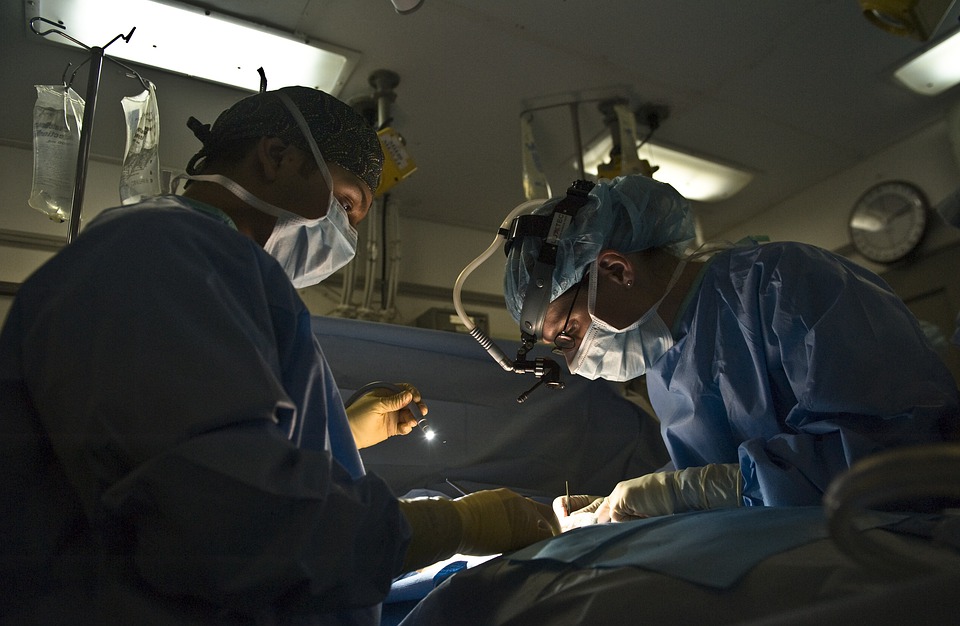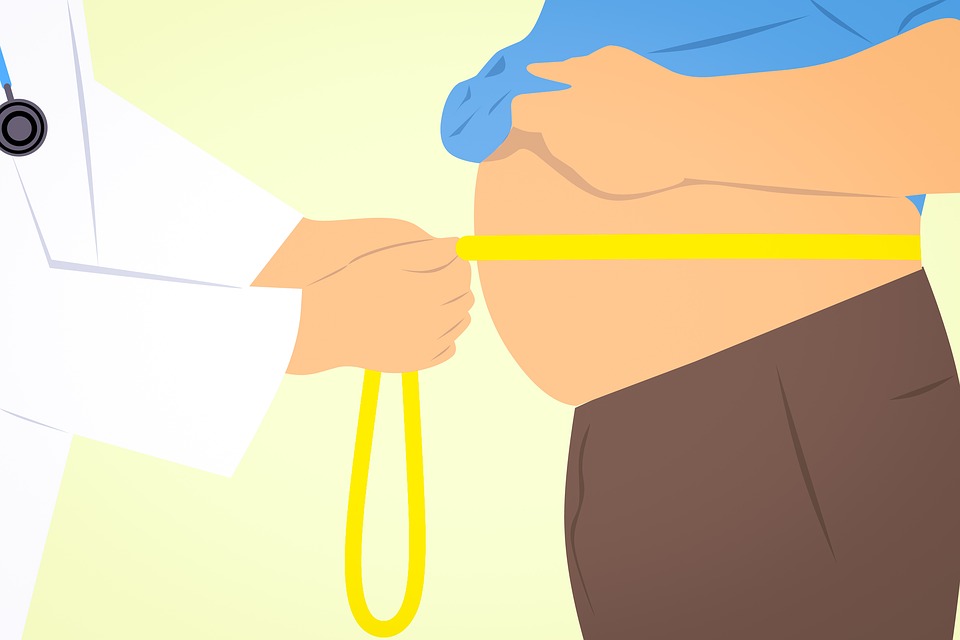
Weight-loss surgery alters the form and function of your digestive system. This surgery might help you lose weight and manage medical conditions associated with obesity. These conditions include diabetes, obstructive sleep apnea, and risk factors for heart disease and stroke.
There are various types of weight-loss surgery, but they all involve making changes to the stomach or intestines to limit how much food or nutrients can be consumed, leading to weight loss.
The most common weight-loss surgery in the United States is sleeve gastrectomy, which involves the removal of a large portion of the stomach to create a tubelike sleeve.
Weight-loss surgery is one part of a treatment plan that also includes nutrition guidelines, exercise, and mental health care. Following this long-term plan is necessary to achieve your weight-loss goals.
If you’re thinking about weight-loss surgery, you’ll need to talk to a bunch of different specialists to help you figure out if surgery is the right option for you.
Medical guidelines
Weight-loss surgery might be an option for an adult with a BMI of 40 or higher, which is based on the general medical guidelines for weight-loss surgery that uses weight and height to estimate body fat.
The surgery may also be an option for an adult who meets these three conditions:
- BMI of 35 or higher
- At least one obesity-related medical condition
- At least six months of supervised weight-loss attempts
In some cases, weight-loss surgery may be an option for adolescents. The guidelines include:
- BMI of 40 or higher and any obesity-related medical condition
- BMI of 35 or higher and a severe obesity-related medical condition
Instead of basing surgery decisions off of BMI numbers, surgeons may instead refer to growth charts for adolescents which show the standard BMI range for each age. If an adolescent’s BMI falls significantly outside of the standard range for their age, the surgeon may recommend the procedure.
Some adults or adolescents who have obesity-related illnesses may be able to have weight-loss surgery, depending on the type or severity of the illness.
Medical concerns
A medical exam will be conducted in order to diagnose any conditions that may be related to obesity. You may undergo tests for:
- Sleep apnea
- Cardiovascular disease
- Kidney disease
- Liver disease
You’ll likely not be able to have surgery if you have these conditions:
- Blood-clotting disorders
- Severe heart disease that prohibits the safe use of anesthesia
- Other conditions that increase the risk of using anesthesia
Behaviors and mental health
How successful you are in losing weight after surgery depends on your ability to change your behaviors regarding eating and exercise. Additionally, it is important to be in good mental health in order to be able to handle the demands of following your treatment plan. The goal of your team is to identify any psychological or behavioral risk factors, address any problems, and decide whether you are ready for surgery.
Your health care team will talk with you about the following:
- Motivation. Are you motivated to embrace lifestyle changes, set goals, and educate yourself about healthy nutrition? Your team will track your ability to follow recommended changes to your diet and exercise routine.
- Weight-loss history. What dieting and exercise plans have you used in the past to lose weight? Did you lose weight or regain weight? Patterns in weight loss and weight gain can help your team understand challenges for you and recommend strategies for post-surgical plans.
- Eating behaviors. Irregular eating behaviors or eating disorders may contribute to obesity. These include binge eating, nighttime eating, and unplanned grazing between meals. Some eating disorders are associated with other mood disorders and other mental health conditions.
- Mood disorders. Depression, anxiety, bipolar disorder, or other mood disorders are associated with obesity, and these conditions may make it difficult to manage your weight. Also, people with untreated mood disorders often find it difficult to stick with new diet and exercise habits after surgery.
- Alcohol and drug use. Problems with alcohol or drug use, as well as smoking, are associated with poor weight loss and continued substance use problems after surgery. Untreated or unmanaged problems likely prohibit the option of weight-loss surgery.
- Suicide risk. There is an increased risk of suicide among people who have undergone weight-loss surgery. The risk is higher among people with depression, anxiety, bipolar disorder, substance use disorder, schizophrenia, or other disorders.
What are the surgical options?
There are several types of obesity surgery that are most commonly performed by surgeons in the United States.
- gastric sleeve
- gastric bypass
- adjustable gastric band
- biliopancreatic diversion with duodenal switch
Gastric sleeve
In gastric sleeve surgery, the surgeon removes most of the stomach, leaving only a small, banana-shaped section. The surgery reduces the amount of food that can fit in your stomach, making you feel full sooner. Taking out part of your stomach may also affect hormones or bacteria in the gastrointestinal system that affect appetite and metabolism. This type of surgery cannot be reversed.
Gastric bypass
Second, the surgeon reroutes, or reattaches, the small intestine to the new, smaller stomach pouch. This section is called the bypass because food bypasses a large portion of the small intestine. The combination of a smaller stomach and bypassed section of intestine results in fewer calories and nutrients being absorbed. Gastric bypass surgery involves three steps. First, the stomach is stapled, creating a small pouch in the upper section. This makes the stomach much smaller, so you feel full sooner. Second, the small intestine is reattached to the new, smaller stomach pouch. This section is called the bypass because food bypasses a large portion of the small intestine. The combination of a smaller stomach and bypassed section of intestine results in fewer calories and nutrients being absorbed.
The next step for the surgeon is to split the small intestine into two sections. The bottom section is then attached to the small stomach pouch. This will allow food to bypass the majority of the stomach and the upper section of the small intestine. Doing so will result in the body absorbing fewer calories.
The surgeon then reconnects the upper part of the small intestine to a new location farther down on the lower part of the small intestine. This allows digestive juices in the stomach to flow past the bypassed part of the small intestine and into the lower part of the small intestine, so that food can be fully digested. The bypass changes hormones, bacteria, and other substances in the gastrointestinal tract that may affect appetite and metabolism. Gastric bypass is difficult to reverse, although a surgeon may do it if medically necessary.
Adjustable gastric band
This surgery involves the surgeon placing a ring with an inflatable inner band around the top of your stomach, creating a small pouch. The ring makes you feel full after eating only a small amount of food, similarly to gastric sleeve and gastric bypass surgery. There is a balloon inside the ring that is filled with saline solution, which the surgeon can use to adjust the size of the inner band’s opening to the rest of your stomach by injecting or removing the solution through a small port placed under your skin.
After surgery you will need to have follow-up visits to adjust the size of the band opening. If the band is causing problems or is not helping you lose enough weight, then the surgeon may remove it.
The gastric band surgery is not as commonly performed in the United States as the gastric sleeve or gastric bypass because it is associated with more complications, specifically the need for band removal due to intolerance. Gastric band surgery typically results in less weight loss than the other two surgeries and is also associated with more complications, again specifically the need for band removal due to intolerance.
Biliopancreatic diversion with duodenal switch
A surgical procedure called biliopancreatic diversion with duodenal switch, or “mixed surgery,” involves two separate procedures. The first procedure is similar to gastric sleeve surgery. A second surgical procedure divides the small intestine into two tracts. Food moves through one tract, bypassing most of the small intestine. This reduces the number of calories and amount of nutrients absorbed. Digestive juices flow from the stomach through the other intestinal tract and mix with food as it enters the colon.
Surgery of this type results in greater weight loss than the other three operations, but also has a higher rate of complications and risks deficiencies in vitamins, minerals, and proteins. Because of this, it is not a commonly performed surgery, but may be recommended by some surgeons for patients with severe obesity and other health concerns.
How is the surgery performed?
Weight-loss surgery is most commonly done laparoscopically, which only requires small cuts and is performed under general anesthesia. The surgeon inserts thin tools and a small scope attached to a camera through these incisions, which projects images onto a video monitor. Laparoscopic surgery has fewer risks than open surgery, may cause less pain and scarring, and has a faster recovery time.
Open surgery, which involves making a single, large incision in the abdomen, may be a better option than laparoscopic surgery for certain people. You may need open surgery if you are severely obese, have had stomach surgery before, or have other complex medical problems.
Pre-surgery expectations
If your health care team members recommend bariatric surgery, they will work with you to develop a treatment plan. This may include:
- Nutrition guidelines. The dietitian will help you with nutrition guidelines, vitamin supplements, and menu planning. The guidelines include changes before and after surgery.
- Exercise plan. A nurse, occupational therapist, or another specialist will help you learn appropriate exercises, develop an exercise plan, and set goals.
- Weight loss. You may be encouraged or required to lose some weight through diet and exercise before you can have surgery.
- Psychotherapy. You may be required to begin talk therapy, drug treatment, or other mental health therapy to treat an eating disorder, depression, or other mental health condition. Your therapy may include developing new coping skills or addressing your concerns about body image or self-esteem.
- Smoking. If you smoke, you’ll be asked to quit smoking or participate in a program to help you quit.
- Other treatments. You’ll be expected to follow treatments for other medical conditions.
The following requirements are intended to help you lose weight effectively after surgery. Weight-loss surgery can be delayed or canceled if your health care team determines that:
- You’re not psychologically or medically ready for surgery
- You haven’t made appropriate changes in your eating or exercise habits
- You gained weight during the evaluation process
What should I expect after surgery?
After surgery, you should take it easy and let your body recover. Walking and moving around may help speed up the process, but go slowly at first and listen to your doctor’s advice about what kind of activity is safe. Once you’re feeling more comfortable, you can gradually add more physical activity.
You will probably be started on a liquid diet after surgery. You will move to a soft diet that includes such foods as cottage cheese, yogurt, or soup over several weeks. You will begin consuming solid foods again eventually. Your health care professional will tell you which foods and beverages you may have and which ones you should avoid. You will need to eat small meals and chew your food well. You will need to take dietary supplements that your health care professional prescribes to make sure you are getting enough vitamins and minerals.
Paying for surgery
If you are hoping to have weight-loss surgery covered by your insurance company, your medical team will need to demonstrate that the procedure is medically necessary. In addition, you may be required to provide documentation that you were not able to lose a sufficient amount of weight through a supervised program of diet and exercise. Some government insurance programs, such as Medicare and Medicaid, may cover the costs of weight-loss surgery.
It’s important to research your insurance coverage and your expected out-of-pocket costs. Your hospital may offer services to help you explore options for financing your surgery.
How much weight can I expect to lose?
The word “depends” is used twice in this text. It first appears in reference to the individual person, and then in reference to the type of surgery. This use of the word “depends” indicates that there are two variables at play here: the individual and the type of surgery. The study found that, on average, people who underwent gastric bypass surgery lost more weight than those who underwent gastric sleeve or gastric banding surgery. However, gastric bypass surgery also had more complications in the month after surgery. Most people regained some weight over time, but that amount was usually small compared with their initial weight loss.
Your weight loss will vary and is dependent on several factors such as the surgery you have and your commitment to leading a healthy lifestyle.
Is bariatric surgery right for you?
A team of healthcare professionals will help you decide if this is the right option for you.
The team uses a process to determine if you’re ready for weight-loss surgery. The same process is there to help you make an informed decision. You will need to consider the benefits and risks, follow through with pre-surgery and post-surgery plans, and make a lifelong commitment to a new nutrition and exercise program.














